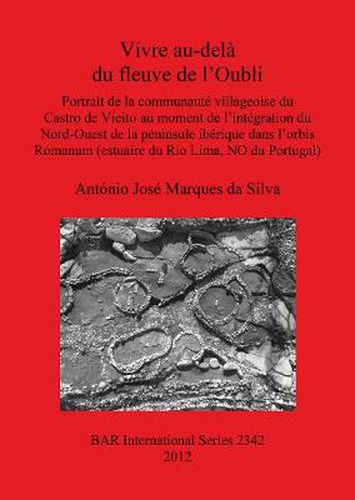Readings Newsletter
Become a Readings Member to make your shopping experience even easier.
Sign in or sign up for free!
You’re not far away from qualifying for FREE standard shipping within Australia
You’ve qualified for FREE standard shipping within Australia
The cart is loading…






This title is printed to order. This book may have been self-published. If so, we cannot guarantee the quality of the content. In the main most books will have gone through the editing process however some may not. We therefore suggest that you be aware of this before ordering this book. If in doubt check either the author or publisher’s details as we are unable to accept any returns unless they are faulty. Please contact us if you have any questions.
Castro do Vieito is a settlement of a modest size, situated on the left bank of the Lima river estuary in the north west of Portugal. It was the target of a large scale archaeological rescue operation from 2004 to 2005, one coordinated by the present author. The enormous source of data, completely unpublished until today, that was provided by this unparalleled intervention, is explored here in such a way as to offer the reader a portrait of a village community which lived through the initial phase of the regions integration within the Roman empire. Castro do Vieitos setting on a nautical stopping point, close to one of the regions largest mineral seams, makes it possible to understand the involvement of this settlement in the supply network of the drafted military that controlled the auriferous explorations situated upstream on the river Lima. This privileged relationship with the military occupation force means that this settlement is distinct in many aspects from the others that surrounded it and makes it important in terms of understanding the different dynamics involved in the interaction of the local populations with the Imperial Army. After a first chapter explaining the methodological problems connected with an intervention of this nature and size and spread, as well as the solutions developed to surpass the problems, the following four chapters portray different aspects of the daily life of this community.
$9.00 standard shipping within Australia
FREE standard shipping within Australia for orders over $100.00
Express & International shipping calculated at checkout
This title is printed to order. This book may have been self-published. If so, we cannot guarantee the quality of the content. In the main most books will have gone through the editing process however some may not. We therefore suggest that you be aware of this before ordering this book. If in doubt check either the author or publisher’s details as we are unable to accept any returns unless they are faulty. Please contact us if you have any questions.
Castro do Vieito is a settlement of a modest size, situated on the left bank of the Lima river estuary in the north west of Portugal. It was the target of a large scale archaeological rescue operation from 2004 to 2005, one coordinated by the present author. The enormous source of data, completely unpublished until today, that was provided by this unparalleled intervention, is explored here in such a way as to offer the reader a portrait of a village community which lived through the initial phase of the regions integration within the Roman empire. Castro do Vieitos setting on a nautical stopping point, close to one of the regions largest mineral seams, makes it possible to understand the involvement of this settlement in the supply network of the drafted military that controlled the auriferous explorations situated upstream on the river Lima. This privileged relationship with the military occupation force means that this settlement is distinct in many aspects from the others that surrounded it and makes it important in terms of understanding the different dynamics involved in the interaction of the local populations with the Imperial Army. After a first chapter explaining the methodological problems connected with an intervention of this nature and size and spread, as well as the solutions developed to surpass the problems, the following four chapters portray different aspects of the daily life of this community.